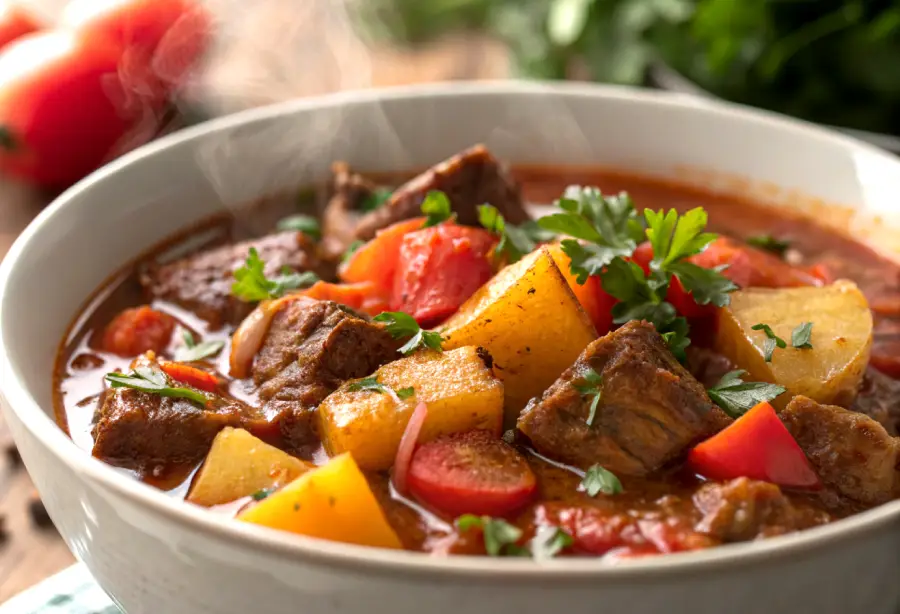Goulash
Goulash is a hearty and flavorful stew with its roots in Hungary, though it has spread across Central Europe and beyond. Traditionally made with tender cuts of beef, onions, paprika, and various spices, this dish is known for its deep, comforting flavors. The defining ingredient in goulash is paprika, which adds both color and a rich, smoky taste to the dish. It’s often served with bread, potatoes, or noodles to soak up the flavorful sauce.
Variations exist across different countries; for example, in Austria and Germany, it may include a richer broth, while in Slovakia, it may be spicier. Goulash has become an iconic part of Hungarian cuisine, often enjoyed during colder months for its warmth and nourishment.
Ingredients:
- 1 lb beef stew meat (cut into cubes)
- 2 tablespoons vegetable oil
- 2 large onions (chopped)
- 3 cloves garlic (minced)
- 2 tablespoons paprika (preferably Hungarian)
- 1 teaspoon caraway seeds (optional)
- 1 bell pepper (chopped)
- 2 medium tomatoes (diced)
- 4 cups beef broth
- Salt and pepper to taste
- 2 medium potatoes (peeled and cubed)
- 1 bay leaf
Calories:
A typical serving (1 cup) of beef goulash contains approximately 250-350 calories, depending on the amount of oil and additional ingredients used.
How to Cook:
- Heat the oil in a large pot over medium heat. Add the beef and brown on all sides.
- Add the onions and garlic, sautéing until soft.
- Stir in the paprika and caraway seeds, cooking for about 1 minute.
- Add the bell pepper, tomatoes, beef broth, and bay leaf. Bring to a boil.
- Reduce heat, cover, and simmer for 1.5–2 hours until the beef is tender.
- Add the potatoes in the last 30 minutes of cooking. Season with salt and pepper to taste.
- Serve hot with crusty bread or over noodles.
History:
Goulash dates back to the 9th century when it was first prepared by Hungarian shepherds. It was originally a simple dish of meat and vegetables cooked over an open flame. Over time, it evolved into the complex, spiced stew we know today, with paprika becoming a key ingredient after its introduction to Hungary in the 16th century.





